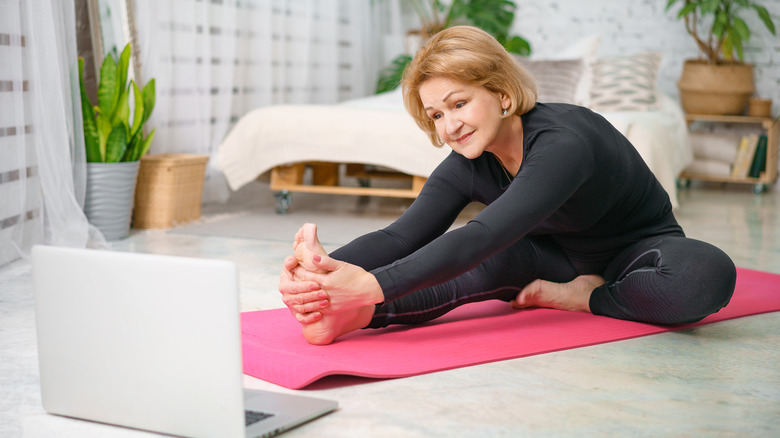Active Stretching Vs Passive Stretching: What's The Difference?
You may have heard of active stretching and passive stretching and wondered how any stretch can really be passive. After all, if you're feeling a stretch, shouldn't that be considered an active motion? It turns out there is a difference — and understanding when to use each can mean the difference between an injury or a smoother workout. Here's what you need to know:
Active, or dynamic, stretching implies that you're moving and in control of the stretch. These are most commonly used in warmups for endurance activities like running, and you're moving within each stretch and progressing from stretch to stretch (via the American Sports & Fitness Association). Most yoga poses can be considered active stretching, especially when done flowing from pose to pose in a class, and doing a series of walking lunges could be considered a great option for dynamic stretching.
With active stretching, the goal is to allow muscles to expand and contract, running through their full ranges of motion, rather than stopping at the furthest extension of the stretch — when you pause, a stretch becomes a static active stretch, which isn't ideal for a workout warmup (via One Health Clubs and Healthline).
What about passive stretching?
Passive stretches, on the other hand, rely on gravity, props, or even another person to perform them. External force is the impetus for the stretches, and these are most often used for cool downs after workouts. The goal is to improve flexibility rather than to prepare muscles for movement (via the American Sports & Fitness Association).
A passive stretch could be a forward fold where a partner gently helps push you deeper into the fold (via Healthline). Some yoga studios offer passive stretch classes where props and partners are used to help students move into poses that are otherwise difficult.
You may also hear static stretching referred to as passive stretching, though the two are slightly different. Static stretching simply refers to holding a stretch without movement — doing a forward fold to touch your toes for 20 seconds, for example — and typically these aren't done pre-workout, they're done after a workout. In fact, most experts agree that static stretching before a workout can actually increase injury risk, so aim for stretches that keep you moving as you prep for your next run (via One Health Clubs).


